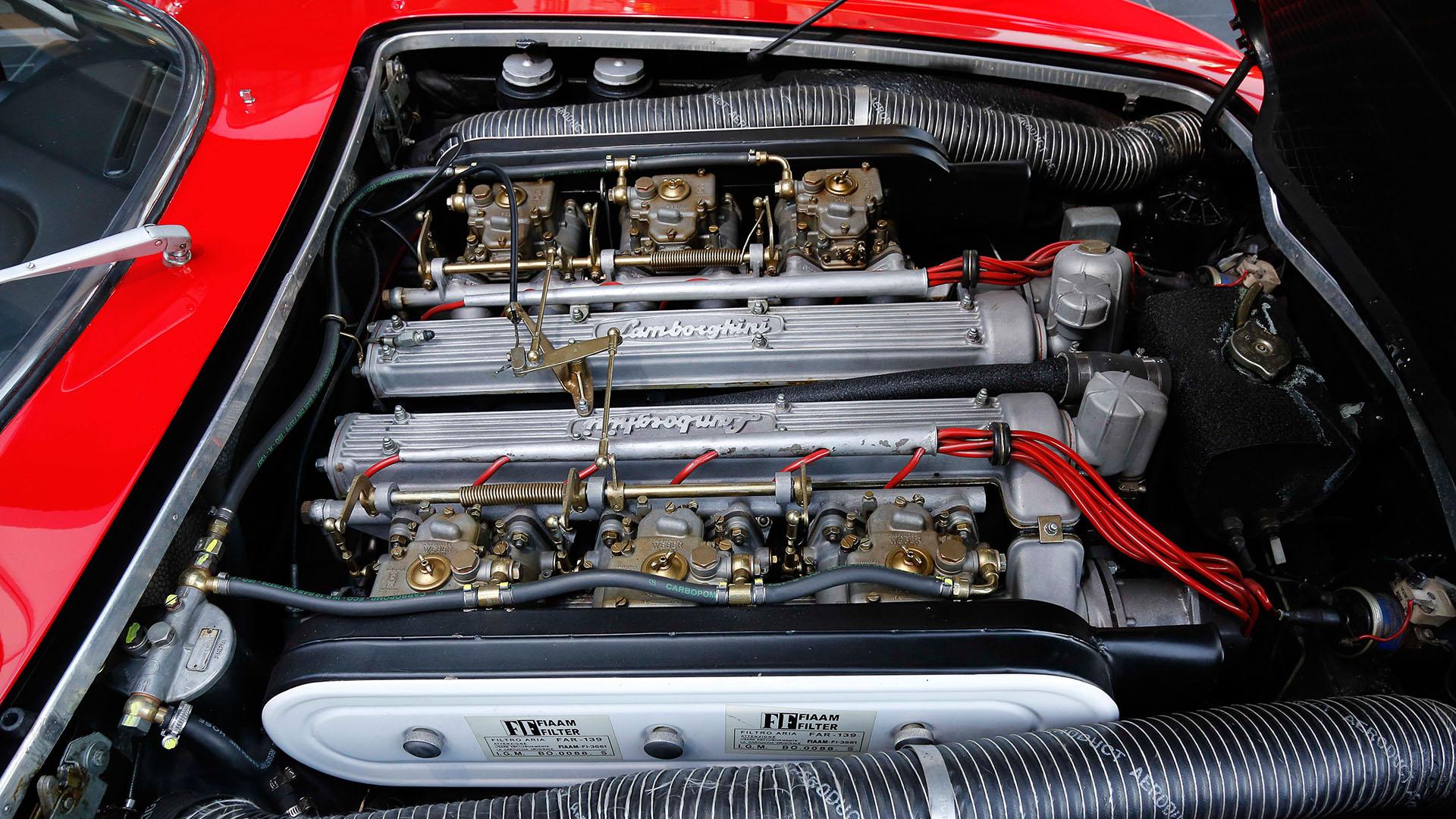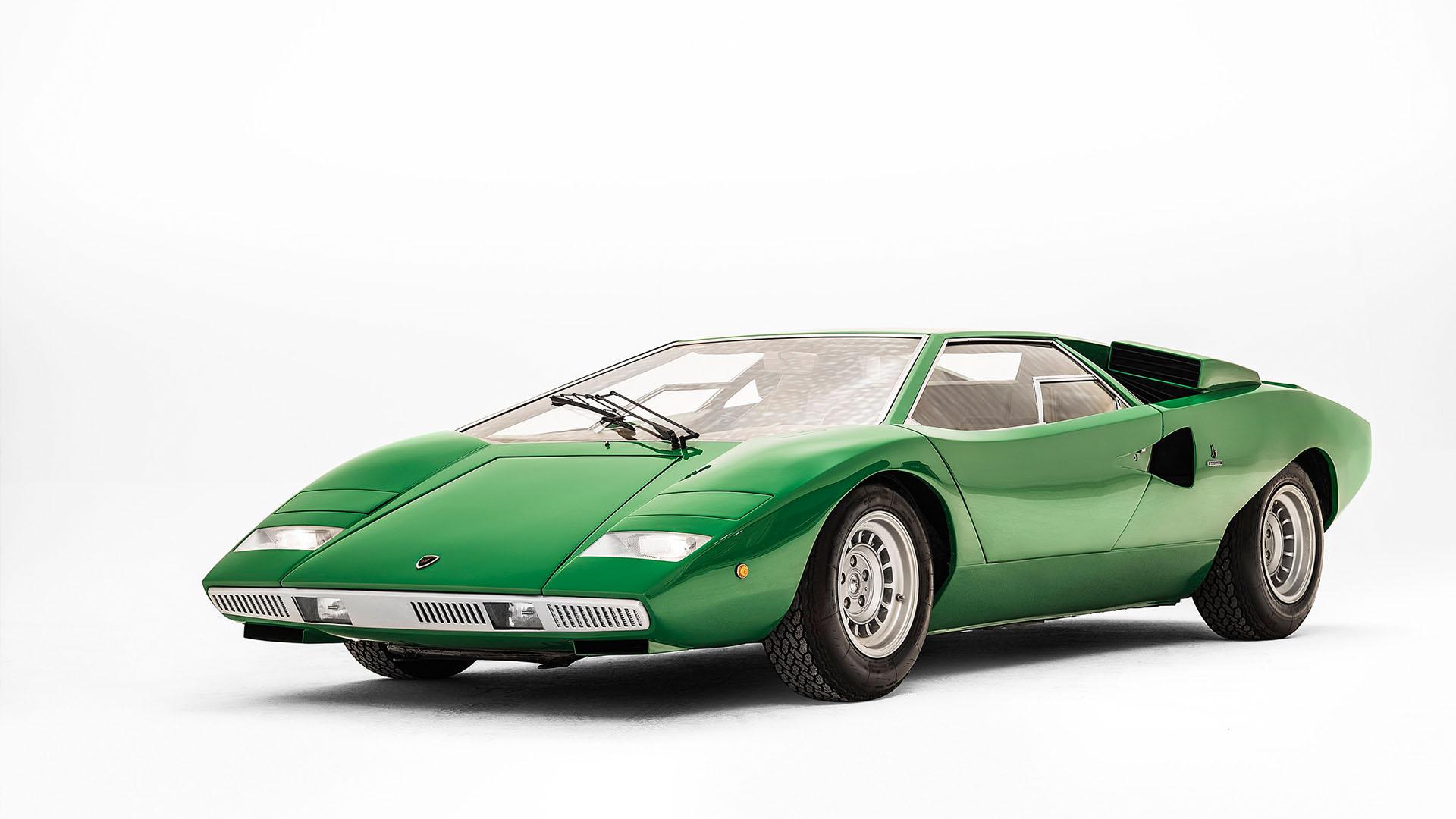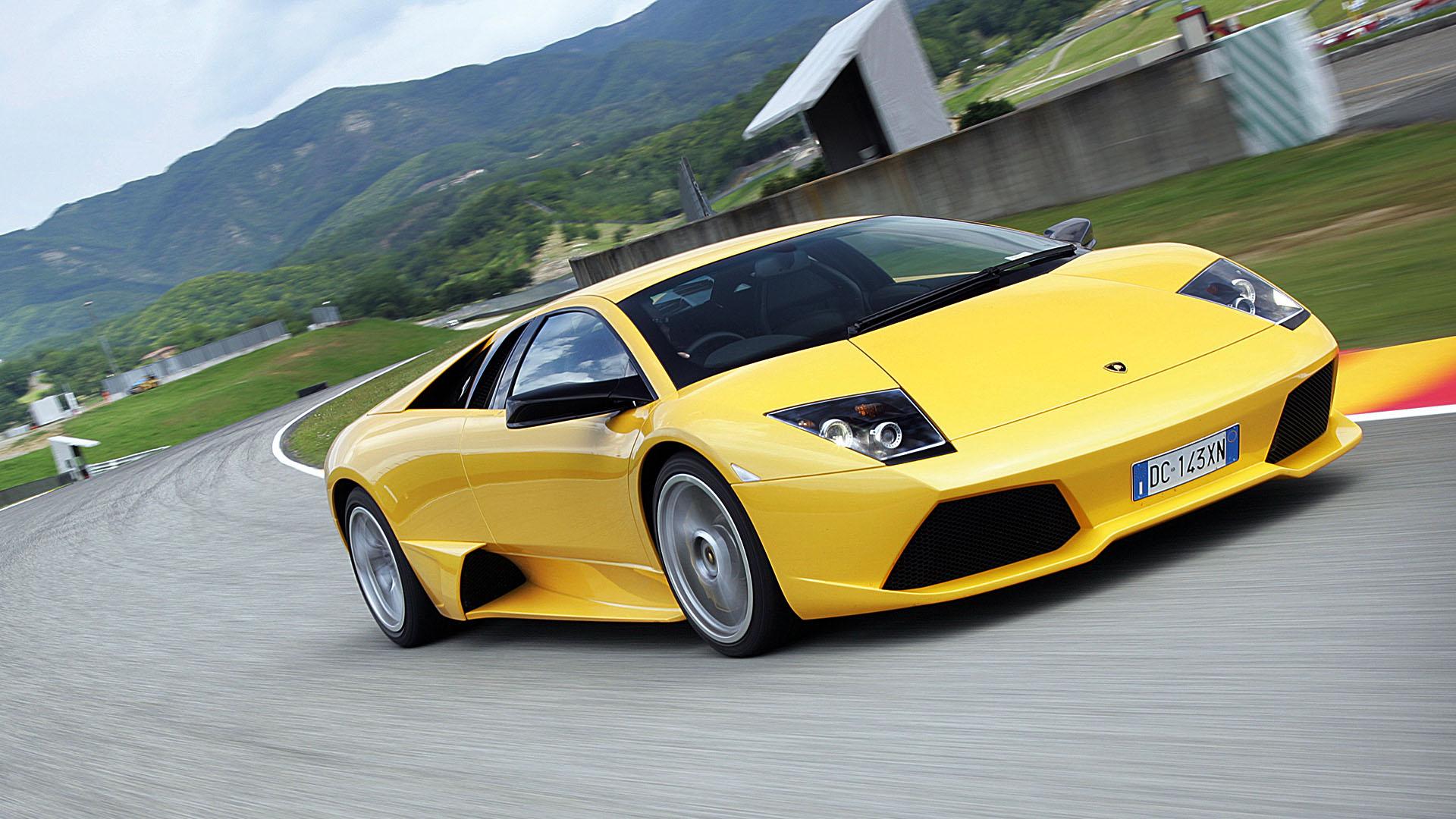When Ferruccio founded Automobili Lamborghini SpA back in 1963 to build the world’s best Gran Tourer, he insisted ‘his’ car would come with a V12 engine, which in his mind was the only choice for a smooth-running, high-performance, comfortable and luxurious GT car for the Sixties, so he planted the seed that would stay part of the Lamborghini for the future … since then every flagship model ever made by Lamborghini came with a naturally aspirated V12 engine, despite the weight and size of such an engine, it was kept in production ever since … but is that era coming to an end over the next few years?

But let’s dive into the history books before we attempt to foresee the future, Ferruccio Lamborghini was already a very wealthy individual when he started his very own car building company, legend has it he was insulted by Enzo Ferrari and wanted to show him he could do a better job (which he did, but that’s just my idea), but there are sources that insist Ferruccio made a well thought out business decision to start building high-end GT cars … whichever it is, I like the idea of him showing off to Enzo.
Ferruccio already knew that if anything, he needed a bespoke engine, not something taken from the shelve at some supplier, so he hired none other than Giotto Bizzarrini to build a V12 engine for Lamborghini, and Giotto delivered … he actually overachieved and the 3.5-Liter 60° V12 engine had to be detuned to ‘only’ 320 hp before it was fitted to Lamborghini’s very first production car in 1964 … the beautiful 350 GT.

Only two years later Lamborghini increased the displacement on their V12 engine from 3464 cc (211 ci) to 3939 cc (240 ci) thus creating the 1966 Lamborghini 400 GT and the 400 GT 2+2, two different models mind you, and it was this engine that would continue to create its path in Lamborghini’s history for several years to come, at first still at 320 hp, but later increased to 330 hp for the Lamborghini Islero that replaced the 400 GT 2+2.
When fitted to the Jarama this same engine would be delivering 350 hp, the same number that would power the Italian Rolls Royce, the first four-seater from Lamborghini, the 1968 Espada, still a two-door car, but with ample room behind the front seats to accommodate four passengers at speeds that were unheard of in the late Sixties … all thanks to Bizzarrini’s original V12 engine combined with Lamborghini’s craftmanship.

Giotto’s engine would serve as a base for arguably Lamborghini’s most important model ever, a trendsetter that started its life in 1966 with the P400, better known as the Lamborghini Miura, that came with the same 4.0-liter displacement V12 engine, but now fitted behind the cockpit, and mounted transversely … the initial designation for the Miura was, in fact, TP400, for Trasversale Posteriore 4.0-liter, and Ferruccio’s first idea was to build 50 units of this Miura.
You have to remember Ferruccio didn’t want to build supercars like the Miura, he preferred a luxurious, but extremely fast GT, a Gran Tourer that could travel at high speeds, but still offer luxury and comfort for at least two people, with their luggage, and is able to drive onto a driveway or even a curb … something a Miura was not, this was a race car for the road, a layout seen on the Ford GT … on the track, the Miura is so low you have to be really careful parking it or driving it onto your driveway, and while there is luggage space at the rear, you won’t be fitting more than an overnight bag in there … and with the exhaust going underneath that compartment … it might get hot in there too, so not ideal.

But the Lamborghini Miura made Ferruccio’s Sant’Agata company known globally, and while today many might have completely forgotten cars like the 350 GT, the Islero, the Jarama, or the Espada … if they are a little bit interested in cars, the name Miura will bring a sparkle in their eyes, and in the end, Ferruccio was overwhelmed by the success of his ‘limited edition’ car that he was forced to order more shells from Bertone and he ended up selling more than 750 of them, in P400, S, and SV form.
By the mid-Seventies Lamborghini unleashed a real Raging Bull onto the automotive world, the Miura successor would fix the direction for Automobili Lamborghini SpA for the next five decades … the Lamborghini Countach introduced the ‘Lamborghini doors’ into the world, a feature that would be kept for every V12 flagship after the Countach … still using a 4.0-Liter V12 engine, still behind the cockpit, but now fitted longitudinally, hence the LP400 designation … with the Countach Lamborghini created a car that could reach 300 km/h … in the Seventies!

Remember Lamborghini is still using the design created in the Sixties by Giotto Bizzarrini in the Countach, and with a little sidestep into the LM002 off-road vehicle from 1986 that came with a 5.2-Liter Countach V12 derived engine outputting 444 hp … going beyond the tarmac with that V12 symphony to be enjoyed by four people inside the LM002 must have been quite the experience … and you could even fit some more people in the back of the LM002 … but Bizzarrini’s design would live on in the 1990 Lamborghini Diablo, now at 5.7-Liter and with 485 hp, still in the same position and orientation as in the Countach, that would remain right up to the current flagship by the way.

The Lamborghini Diablo would be the first production supercar from Sant’Agata to offer four-wheel drive in the VT version, by now we are talking about a top speed well into the 320 km/h range and acceleration figures of 4.5 seconds to reach 100 km/h (62 mph) from a standstill, and things would get even better when the Murciélago took over the reign a decade later, in 2001, now with a massive 6.2-Liter displacement and a massive 580 hp initially … the resulting top speed was 330 km/h in the first car under the Audi ownership.

And while the Miura SV is considered by many to be the ultimate Lamborghini, there have been some other noteworthy V12 flagship models along the years, like the 1999 Diablo GT or the venerable Murciélago LP670-4 Super Veloce, arguably the best ‘Murcie’ ever, and with only 186 units ever made before the Aventador took over, probably the most ‘investment’ worthy model in the Murciélago range too.

But then the Lamborghini Aventador takes over as the company’s flagship model, and while it still uses a V12 engine, it is no longer a direct evolution of Giotto Bizzarrini’s original design, the V12 for the Aventador was a new design, now with a 6.5-Liter displacement, but still mounted longitudinally behind the driver and passenger, and with 700 hp at your feet, the LP700-4 designation makes complete sense … by now you can’t even order a manual transmission, nor a two-wheel-drive V12 Lamborghini anymore, they are all e-Gear models with four-wheel drive.

Today we have the impressive Lamborghini Aventador SVJ, 770 hp and beautifully aggressive styling, a true supercar in every sense of the word that offers performance and a driving experience that usually only comes with hypercars at a multitude of the SVJ’s MSRP, and you can look at any which way you like … once the doors go up, you draw attention, and the Aventador SVJ does that with ease … but are we looking at the final few steps of an era here? Will the future no longer hold a V12 engine for Lamborghini, with all the new regulations and limitations … are we back at the point Lamborghini was in the late Seventies when they called the Countach ‘the last of the dinosaurs’?

It might seem like that to be honest, with electric cars like the Rimac Nevera showing some very impressive performance … in silence, what might the future hold for Lamborghini, and more specifically for their legendary flagship model? We all know their Super SUV, the Urus, will most likely be the first to go for a hybrid system, probably at the same time the ‘mid-life’ facelift is unveiled, but in a recent speech by Stephan Winkelmann, he confirmed the Direzione Cor Tauri plan that will result in every Lamborghini model being ‘electrified’ by 2024, that’s in less than three years already, there is even a rumor about a new, all-electric, fourth model in the pipeline after 2025!
According to Stephan Winkelmann, Lamborghini is at a crossroad at this point, a choice has to be made about the large combustion engine that has made them famous during the first sixty years of existence, do we add electric power to create a hybrid as they did with the limited edition Sián, or go for full-electric?
Winkelmann confirmed the V10 and V12 engines will remain for now, but only for the next year or so, as an homage to their legacy in the history of Lamborghini, there will be more one-off models unveiled, another limited edition version, and even a new car from their Squadra Corse department, so until Lamborghini goes to hybridization, we’ll be seeing some interesting models come around.

But work on both the successor to the Aventador and the Huracán is already into the final stages, starting in 2023 we will see the Urus get a hybrid version, and most likely the Aventador replacement will be unveiled that same year, with plug-in hybrid propulsion, by 2024 we’ll be seeing the Huracán production come to an end and get a hybrid in that line up too … by 2024 Lamborghini will be the first super-sports car manufacturer with hybrids for each model in production.
But here comes the catch … adding hybrid propulsion adds a lot of weight and extra mass to a car, and when it comes to a supercar like the Aventador and the Huracán, every kg of added weight is too much, with the Sián for instance the entire supercapacitor setup and the electric motors added 34 kg to the overall weight, but it also added 34 hp, so that was nicely balanced … but for a production car the gain should be a lot higher, which comes with more weight too.

The current flagship, the Aventador SVJ puts down 1,525 kg on the scales at this moment, so you’ll have to be careful not to add too much additional mass in terms of multiple electric motors and batteries. If we take a look at the competition, the Ferrari SP90 for instance, that car weighs 1,570 kg … but that includes 270 kg for the entire hybrid system, granted the overall result is 1,000 hp, but that’s from a small 4-Liter V8 engine … the Aventador comes with a massive 6.5-Liter V12 engine … imagine adding 270 kg on top of her original weight … you would be looking at 1,800 kg, that’s almost two-ton … that is totally unacceptable.
So how do you remove about 250 kg from the current flagship top to create a successor that’s capable of better performance, even with the extra weight of the hybridization setup? You can only go so far in the creation of a lightweight carbon fiber chassis and body, you’ll still need enough rigidity to cope with the massive forces inflicted during spirited driving, so I highly doubt they can remove 250 kg that way.

Another way is to go for a smaller displacement engine, even lose a couple of cylinders along the way … that would significantly reduce the weight of probably the heaviest item in the entire car, the engine, and by adding 300 or so hp with electric motors you could still reach 1,000 hp overall, even with a small V8 for instance … so will Lamborghini’s step into the future with hybrid propulsion result in the end of the V12 era Ferruccio was so keen on?
Only time will tell, I personally don’t think Lamborghini customers are ready to forego the legendary V12 engine in the Aventador successor, perhaps the car after that, and that one might even be fully electric with the fast-paced evolution we see today, but for now, I’m about 99% sure that whatever hybrid will be unveiled to take the throne from the reigning Aventador, will still have a V12 engine with additional electric motors, it might have a smaller displacement to save space and weight, but I think the V12 will be with us until the beginning of 2030 … after that, it might disappear completely, as will any other traditional combustion engine, unfortunately.



